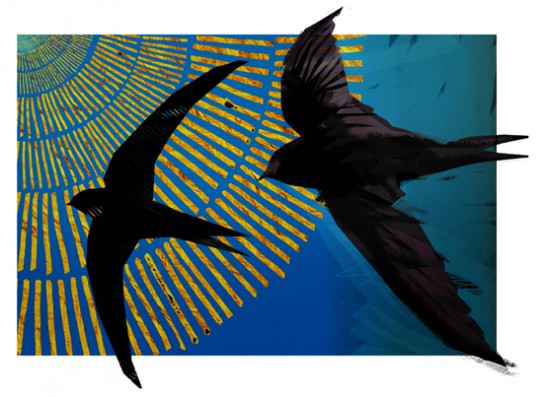 illustration by Pete Starling.
illustration by Pete Starling.
by Cheryl Tipp.
Every morning I cast my eyes upwards in anticipation and scan the sky. Have they returned yet? Is there any sign of those black silhouettes sweeping through the air? Can I hear that high-pitched ‘scree’? I’m still waiting for my first Swift sighting of 2011 but any day now these amazing birds will return to Britain after spending the winter in sub-Saharan Africa.
The Swift is one impressive bird. It may not look that impressive and it certainly doesn’t sound impressive, but trust me, this is one of the most remarkable birds that can be seen in British skies during the spring and summer months. Swifts live almost entirely on the wing; they eat, drink, sleep and even mate whilst in the air (see, I told you they were impressive). They can reach heights of over 10,000ft, which puts them at the same level as small private planes. Individuals can literally spend years without ever touching land and if they do happen to perch somewhere, it’s almost always on a vertical surface. This gift for upright gripping is reflected in the German common name Mauersegler, which translates as ‘wall glider’.
Roughly 80,000 pairs migrate to and from Britain every year. They stay just long enough to breed, which leaves us with only a small window of opportunity to marvel at the dramatic aerial displays of these masters of the open air. There’s no way of telling when the Swifts will begin the mammoth journey southwards to their winter feeding grounds. They don’t form orderly lines on telephone wires or gather in a particular spot. They simply leave. And so we say goodbye to these incredible birds for another year. We wish them well and look forward to their return. Will they be earlier next year? Perhaps they’ll stay a little bit longer next time? We’ll just have to wait and see.